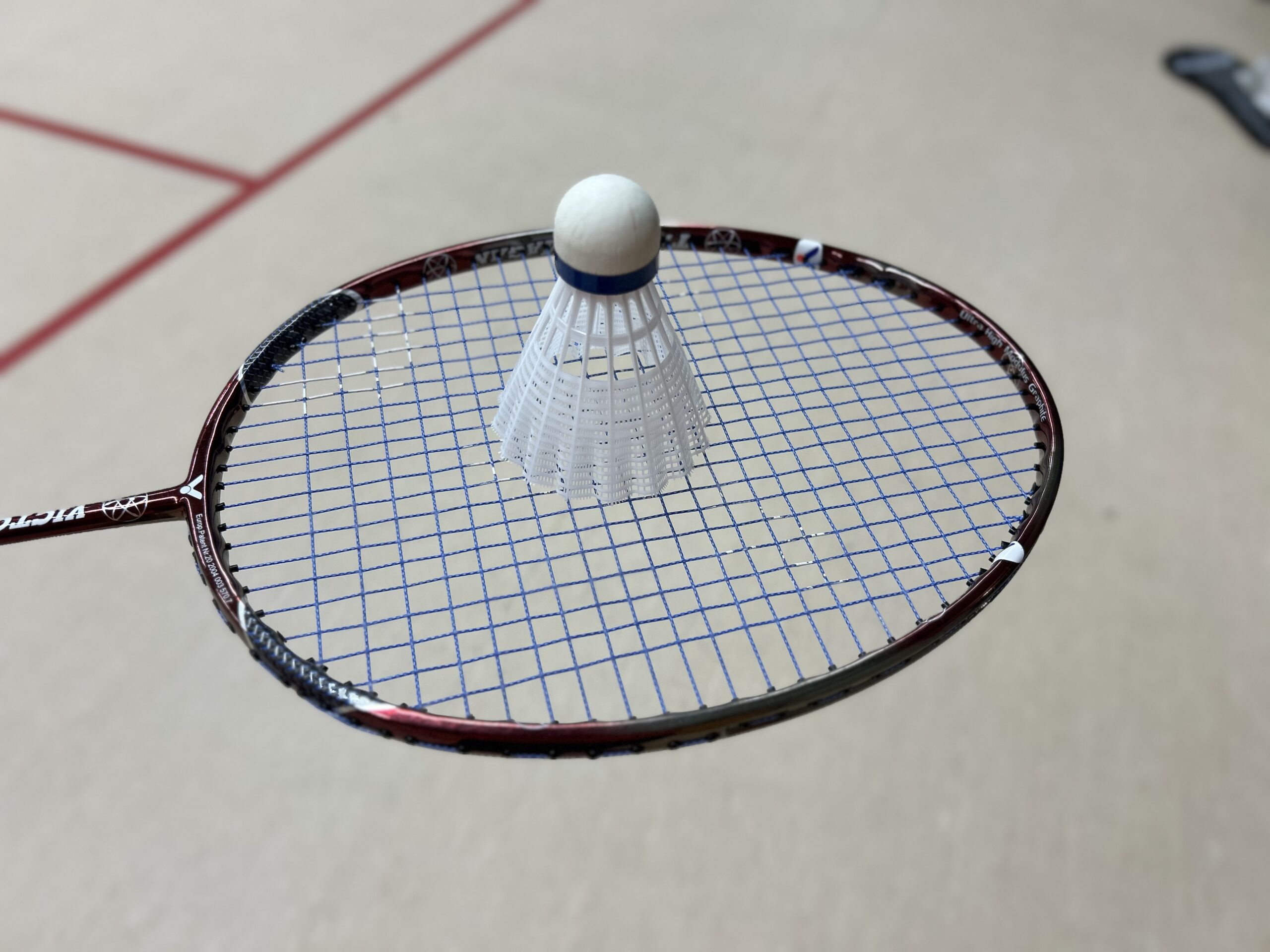
Stringing
The string tension of a badminton racket is often expressed in kilograms (kg). This has a significant impact on the racket’s performance and how it responds to different types of shuttles. When you have a racket restrung, you will always be asked how many kilograms of tension should be applied. If you're not familiar with this, it can be quite difficult to answer.
To provide a bit of clarity, we explain the advantages and disadvantages of specific tension levels, as well as information about the strings and their relation to the type of shuttle you’ll be using.
String tension can be divided into two categories: 8–10 kg and 11–14 kg. This makes the choice of tension a bit easier, as it already rules out some options.
8-10 kg tension
Advantages
· More power
· Larger sweet spot
· More comfort
The trampoline effect gives extra speed to the shuttle and makes it easier to hit well. There's less strain on the arm, reducing the risk of injury
Disadvantages
· Less control
· Less effective for powerful shots
Due to the trampoline effect, there is extra flexibility, making it harder to execute precise shots. Advanced players may lose speed and power.
11-4 kg tension
Advantages
· Better control
· More power with proper technique
· Faster racket response
Thanks to the stiffer strings, you can place the shuttle more accurately, and stronger players benefit from more direct power return. The racket responds faster, which helps during fast-paced rallies.
Disadvantages
· Smaller sweet spot
· Higher strain
· Greater risk of string breakage
The ideal hitting point is smaller due to the higher tension and requires more power. The risk of injury increases if technical skills are lacking. More tension on the strings leads to greater wear and tear.
As you can see, more tension is not necessarily better and can even lead to injuries or a racket that doesn’t feel good to play with.
Types of shuttlecocks
The type of shuttle you play with also matters. We distinguish between nylon and feather shuttles. Generally, nylon shuttles are used by beginners to intermediate players, while feather shuttles are preferred by advanced players.
Nylon: At a low tension (<10 kg), the trampoline effect helps to add speed to the relatively heavier shuttle. At a high tension (>11 kg), a nylon shuttle feels very heavy, and control is more difficult due to the stiff strings.
Feather: At a low tension (<10 kg), the trampoline effect makes it harder to maintain the accuracy that a feather shuttle offers. At a high tension (>11 kg), the accuracy of a feather shuttle is optimally utilized because the strings are stiffer, providing more control and precision.
Types of strings
Besides tension and shuttle type, another important factor in stringing is the type of string used. This also determines how the stringing feels during play.
A thin string (<0.68 mm) has the advantage of giving you more control over the shuttle and is ideal for high tension (>11 kg). A disadvantage is that these strings break more quickly due to the higher tension and are therefore less durable with intensive use.
A thick string (>0.68 mm) is more durable and better suited for lower tension (<10 kg), making it ideal for beginners to intermediate players. A downside is that it offers less feel and precision, especially for subtle shots.
Yonex strings are categorized into 5 characteristics: “quick repulsion”, “durability”, “hitting sound”, “shock absorption”, and “control”. Each string is rated on a scale of 10 to indicate how it performs in these categories. This can help you choose the right string. Below is more explanation about these characteristics.
Quick repulsion
In Dutch, this simply means fast rebound. It indicates how strong the trampoline effect is. This results in a faster rebound of the shuttle upon contact, contributing to a more dynamic and aggressive playstyle. Strings scoring high in quick repulsion are generally thinner.
Durability
Durability, or long lifespan, means the strings are usually slightly thicker and have a smoother texture. This causes less strain on the string and makes it last longer. A “disadvantage” is that these strings provide less feel and control, but they are ideal for beginners and some intermediate players.
Hitting sound
A string that scores high here produces a more sensational sound when hitting the shuttle compared to one that scores lower. A louder sound can add character to a shot and enhance the playing experience. It can also be intimidating for an opponent because it gives the impression of strong hits.
Shock absorption
Shock absorption is the ability of the string to dampen vibrations and shocks when the shuttle hits the racket. This plays an important role in reducing strain on the player’s arm and wrist, which can help prevent injuries and increase comfort. Strings that score well in shock absorption are generally a bit thicker.
Control
A string with more control can deliver precise and consistent shots. This aspect is especially important for players with a tactical playing style who want to focus on placement and finesse rather than pure power. A higher tension helps to optimize this effect.
Conclusion
There’s quite a bit to consider when choosing a stringing for your favorite racket. But don’t worry! If you’re unsure, feel free to ask BadmintonBespannen.nl for advice. You can easily start a WhatsApp conversation where we can discuss your options. Sending an email to info@badmintonbespannen.nl is also possible.
